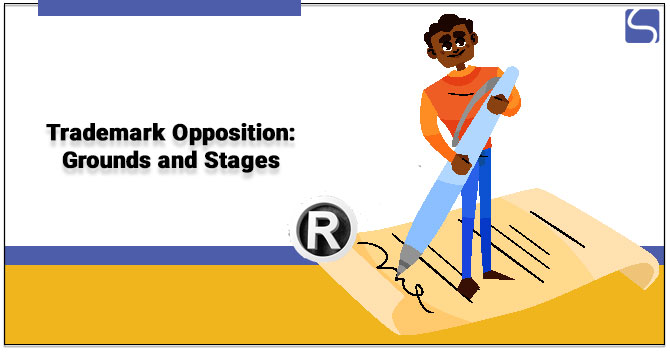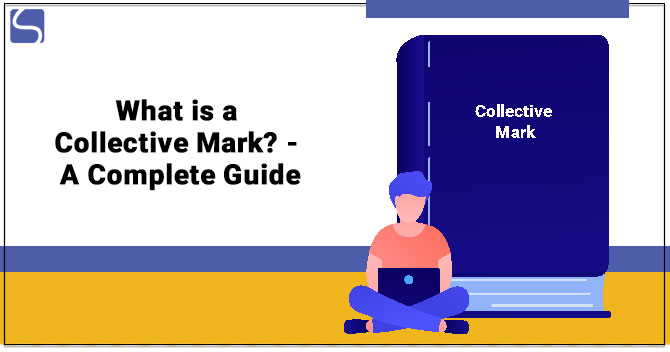Trademark Opposition: Grounds and Stages

Kandarp Vanita | Updated: May 01, 2021 | Category: Trademark
A trademark is specifically a logo, used by manufacturer to differentiate his goods or services from other manufacturers in the market. The logo can be in the form of word, letter, number, design or symbol.
Trademark Opposition is an intrinsic stage concerned with the process of trademark registration in India. After the trademark is published in the Journals of Trademarks then only a trademark can be opposed. The Trademark Act, 1999[1] mentions that any person aggrieved can raise the opposition against the registration mark that is published in the Trademark Journal by filing with the Registry a notice of opposition in the specified manner and within the fixed period. In this article, we shall read about the Trademark Opposition and its Grounds, Stages and Relevant Case Laws.
Table of Contents
What is the Trademark Opposition Period?
The Act specifies that any individual can file the notice of opposition within a prescribed period of four months against the trademark from the date since which the mark was given for advertisement or re-advertised in the Trade Marks Journal. It may be important to specify here that the Opponent is not mandated to have the registration or application in India for the purpose of opposing any trade mark.
The grounds Of Opposing Trademark in India
The grounds on which opposition of Trademark can be done in India are as under:
- As given under section 9 of the Act – The Absolute grounds of refusal, i.e. if the trade mark is not distinctive or not being capable of differentiating the goods or services of the Applicant from those of the others in the market.
- As provided under Section 11 of the Act- The Relative grounds of refusal, i.e. the trademark being conceptually, phonetically, deceptively, visually, confusingly similar or identical to the Opponent’s trade mark.
- Other appropriate grounds that shall depend on the facts of the matter i.e., if the applicants trademark being copyright, well known, geographical indication etc.
Advantages of Trademark Opposition
The advantage of opposing trademark is as given below:

- Beneficial Remedy for TM proprietor: Trademark opposition becomes a proficient means in preventing other trademark owners to continue with the similar mark as it may hinder or obstruct their brand or logo image and may also create confusion in the market amongst the customers dealing with the same kinds of goods.
- Public Consultation: As the brands of trademark are formed on the basis of the popularity in public and demand, it is compulsory to consult the public first before obtaining the trademark approval with regards to the trademark applied for registration.
Stages involved in trademark Opposition
Filing of Notice of Opposition by the Opponent
The different steps involved in opposing trademark are given below:
- The Registrar shall normally serve a copy of the notice of the opposition of trademark to the Trademark Applicant within three months time period from the receipt date of the same.
- The Applicant shall file its counter statement within two months after receiving the notice of opposition and the applicant shall specify the facts as he has alleged in the opposition notice and that has been accepted by the Applicant.
- In accordance with the new Trademark Rules, 2017, there is a provision for fast filing of the counterstatements. The applicant is having the option of filing the counter-statements against the application of opposition in order to accelerate the opposition proceedings.
- If the Applicant fails in filing the counter statement within the fixed time, then it shall be deemed that the Applicant’s Trademark has been abandoned for non-prosecution under Section 21(2).
- When the applicant files the counter statement, then the opposition shall proceed to the evidence stage.
The Evidence Stage
- The Registrar shall within two months from the date of receipt usually serve a copy of the counter statement on the Opponent.
- Within two months from receiving the counter statement, the Opponent will file the affidavit as an evidence in support of the opposition.
- The Registrar shall normally serve the affidavit copy as an evidence supporting the opposition to the Applicant and within two months from the date of receipt of the same.
- Within two months from receiving the affidavit by way of evidence in support of opposition, the Applicant will file affidavit by way of evidence supporting the application.
- Within two months from the receipt date, the Registrar shall normally serve a copy of the affidavit as evidence in support of the application on the Opponent.
- From two months of receiving the affidavit by evidence in support of application, the Applicant shall file the reply with its affidavit by way of evidence.
The Hearing Stage
- Subsequently, after three months the hearing is conducted for the matter of opposition after considering the evidence and hearing the parties. Then it will be the discretion of Registrar to decide whether the Trademark has to be accepted or not for the registration. The aggrieved person can challenge the decision of the Registrar made in the opposition proceedings by filing the appeal to the Intellectual Property Appellate Board(IPBA).
Documents required to file while opposing Trademark
The documents that are required while opposing a trademark are as under:
- Applicant’s details: The Full name, Address, Contact details and Nationality etc. details of the applicant.
- Power of Authorization (POA): The POA permits the trademark agent or the attorney to file for the trademark opposition on the behalf of applicant.
- Affidavit: Affidavit is required with the basic information with respect to the trademark and the date of its first usage and proof of the use or other evidences.
- Details with regards to the opposed mark together with all the possible grounds of oppositions: the document containing thedetailed information relating to the trademark against which the trademark opposition is to be filed, i.e.all the probable grounds for filing the opposition.
Conclusion
In India, the Trademark law provides with the provision for opposing a trademark which is an efficient and successful method for restraining or in revoking the grant of any non-eligible marks. Hence, trademark opposition helps the opponents in securing and protecting their logos and marks. Therefore, the Indian Trademark provides for opposing such unfair use, i.e. deceptively similar marks and give legal protection to the owners.
Read our article:How to use Copyrighted Content in India?














